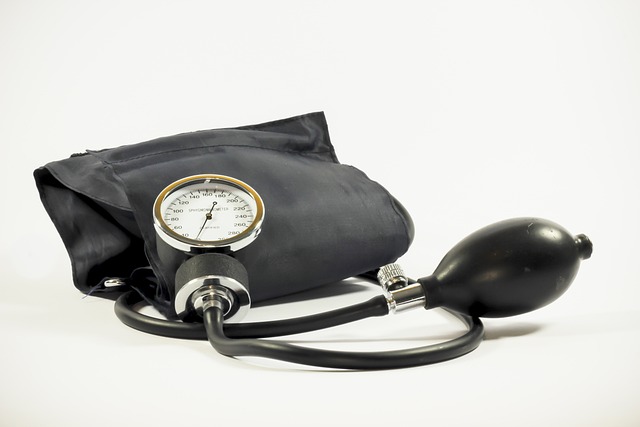Irregular boiler pressure readings stem from causes like air buildup, low water levels, seasonal condensation, and worn components. Seasonal changes require maintenance to preserve consistent pressure, enhancing efficiency. Regular valve calibration, leak checks, and proper fuel systems optimization are key to addressing boiler pressure problems. Prompt replacement of pressure gauges and regular servicing prevent underlying issues. Understanding boiler pressure control aids in early problem detection and safe adjustments.
Irregular boiler pressure readings can signal a range of issues, leading to inefficient operations and potential safety hazards. This article provides comprehensive solutions for addressing boiler pressure problems. We explore common causes, from leakages in steam and water lines to burner optimization, and offer practical steps such as calibrating pressure relief valves, testing pressure gauges, and implementing preventive maintenance protocols. By following these guidelines, you can ensure stable and safe boiler pressure levels.
- Identify Common Causes of Irregular Boiler Pressure
- Calibrate and Maintain Pressure Relief Valves
- Inspect for Leaks in Steam and Water Lines
- Optimize Burners and Fuel Supply Systems
- Regularly Test and Replace Pressure Gauges
- Implement Preventive Maintenance Protocols
Identify Common Causes of Irregular Boiler Pressure

Irregular boiler pressure readings can be a result of several common causes. One of the primary issues is air buildup within the system. Air can enter through leaking seals or vents, leading to inconsistent pressure levels. Another frequent problem is low water levels; if the boiler doesn’t have enough water, it cannot maintain optimal pressure. Why is my boiler pressure low? This question often arises for homeowners, and the answer could be as simple as a forgotten top-up or a faulty fill valve.
Seasonal changes also play a significant role in boiler pressure problems. During colder months, condensation can build up, affecting the system’s equilibrium. Additionally, worn-out components such as pressure relief valves or defective thermostats can contribute to irregular pressure readings. Boilers require proper maintenance during these seasonal transitions to ensure they maintain consistent pressure, thereby enhancing overall efficiency and performance.
Calibrate and Maintain Pressure Relief Valves

Regular calibration and maintenance of pressure relief valves are crucial in addressing and preventing boiler pressure problems. These valves play a vital role in maintaining optimal pressure levels within commercial boilers, ensuring their efficient operation. Over time, debris accumulation or wear can impact their accuracy, leading to what causes low boiler pressure. A plumber Bromsgrove professional should periodically inspect and adjust these valves to guarantee they function correctly.
Proper maintenance involves checking for any leaks, ensuring the valve’s settings align with the manufacturer’s specifications, and replacing worn-out components if necessary. By keeping pressure relief valves in excellent condition, you can minimize commercial boiler pressure issues and maintain a safe, efficient heating system.
Inspect for Leaks in Steam and Water Lines

One common cause of irregular boiler pressure readings is leaks in steam or water lines. Even minor leaks can significantly impact the system’s pressure, leading to fluctuations and potential damage over time. To identify these leaks, visually inspect all visible connections, joints, and pipes for any signs of moisture, corrosion, or damage. Steam leaks often manifest as hissing sounds or fog emanating from certain areas, while water leaks may show up as persistent drips or damp spots. Regular maintenance involves checking these points to ensure everything is secure and sealed properly.
If you suspect a leak, it’s crucial to act promptly. A low boiler pressure repair guide can offer step-by-step instructions, but for complex issues, consulting a professional is recommended. The ‘how to stabilize boiler pressure naturally’ approach might include sealing minor cracks or replacing old gaskets, but severe cases may require more extensive repairs. Knowing when to call a pro for low boiler pressure issues ensures your system’s longevity and prevents further complications.
Optimize Burners and Fuel Supply Systems

Optimizing burners and fuel supply systems is a strategic approach to tackling boiler pressure problems head-on. By ensuring efficient combustion, you can significantly impact the overall pressure regulation within your boiler system. This involves careful adjustments to burner nozzles, air-fuel ratios, and fuel delivery mechanisms. Modern technologies like precise control systems and advanced sensors can monitor and adjust these parameters in real time, fostering a more stable and controlled environment.
A key focus should be on achieving the right balance—not only between air and fuel but also in terms of pressure distribution throughout the system. This meticulous tuning not only improves boiler efficiency but also promotes consistent pressure readings, ensuring that your system operates seamlessly without any unexpected fluctuations. Moreover, this optimization process can help you harness the full potential of your fuel source, leading to an increase in boiler pressure naturally, thereby addressing the root cause of low pressure issues and enhancing overall system performance.
Regularly Test and Replace Pressure Gauges

One of the most straightforward ways to address issues related to irregular boiler pressure readings is to implement a regular testing and replacement regimen for pressure gauges. Over time, these gauges can become less accurate or fail entirely, leading to inaccurate pressure readings. By conducting routine checks, you can identify any discrepancies early on, preventing potential boiler pressure problems from escalating.
When low boiler pressure solutions for homes are needed, replacing the pressure gauge is a common fix. This simple act ensures that your boiler operates within its intended pressure range, enhancing safety and efficiency. Additionally, comparing normal vs low boiler pressure readings can help homeowners identify anomalies and take proactive measures to maintain their heating systems, thereby avoiding costly boiler repairs.
Implement Preventive Maintenance Protocols

Irregular boiler pressure readings often point to underlying issues that can be addressed through effective preventive maintenance protocols. Regular servicing and inspections are key to understanding boiler pressure control dynamics. By scheduling routine check-ups, you can identify potential problems early on, preventing them from escalating into major boiler pressure problems. During these services, pay close attention to the system’s overall condition, including heat exchanger integrity, flame stability, and water quality.
Addressing low boiler pressure promptly is crucial. When to service a boiler with low pressure depends on several factors, such as usage patterns and age of the equipment. If hot water pressure drops significantly or consistently stays below recommended levels, it’s time to investigate. Understanding boiler pressure control mechanisms can guide you in troubleshooting, ensuring that any adjustments made are safe and effective.
Addressing irregular boiler pressure readings is essential for optimizing performance, safety, and efficiency. By identifying common causes such as leaky lines or improper burner settings, implementing preventative maintenance like regular gauge testing and calibration, and adhering to strict maintenance protocols, you can resolve boiler pressure problems effectively. These solutions not only ensure your boiler operates at peak condition but also help prevent costly breakdowns and enhance overall system reliability.
